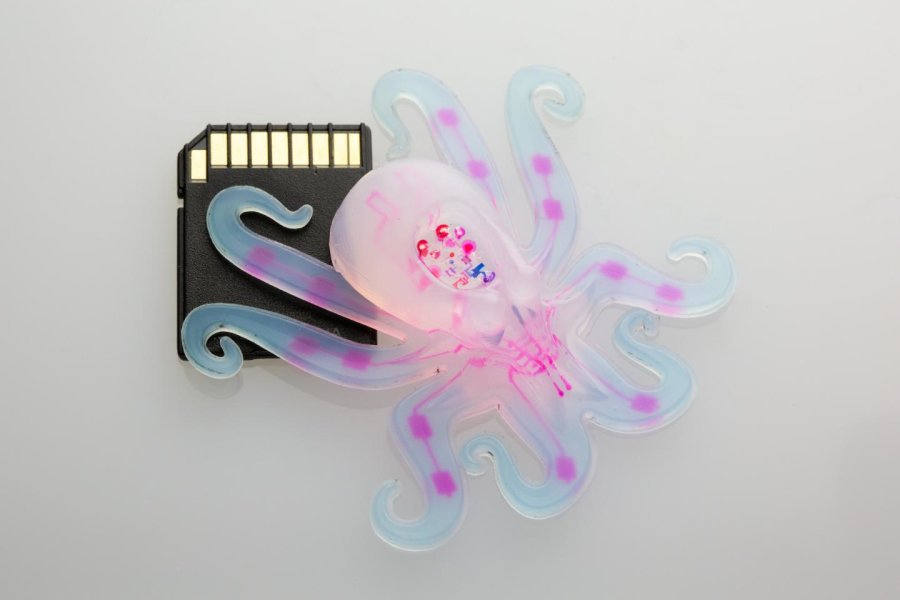A team of Harvard University researchers with expertise in 3D printing, mechanical engineering, and microfluidics has demonstrated the first autonomous, untethered, entirely soft robot. This small, 3D-printed robot - nicknamed the octobot - could pave the way for a new generation of completely soft, autonomous machines.
Soft robotics could revolutionize how humans interact with machines. But researchers have struggled to build entirely compliant robots. Electric power and control systems - such as batteries and circuit boards -- are rigid and until now soft-bodied robots have been either tethered to an off-board system or rigged with hard components.
Robert Wood, the Charles River Professor of Engineering and Applied Sciences and Jennifer A. Lewis, the Hansjorg Wyss Professor of Biologically Inspired Engineering at the Harvard John A. Paulson School of Engineering and Applied Sciences (SEAS) led the research. Lewis and Wood are also core faculty members of the Wyss Institute for Biologically Inspired Engineering at Harvard University.
Octopuses have long been a source of inspiration in soft robotics. These curious creatures can perform incredible feats of strength and dexterity with no internal skeleton.
Harvard's octobot is pneumatic-based, i.e., it is powered by gas under pressure. A reaction inside the bot transforms a small amount of liquid fuel (hydrogen peroxide) into a large amount of gas, which flows into the octobot's arms and inflates them like a balloon.
The octobot is powered by a chemical reaction and controlled with a soft logic board. A reaction inside the bot transforms a small amount of liquid fuel (hydrogen peroxide) into a large amount of gas, which flows into the octobot's arms and inflates them like a balloon. The team used a microfluidic logic circuit, a soft analog of a simple electronic oscillator, to control when hydrogen peroxide decomposes to gas in the octobot.
